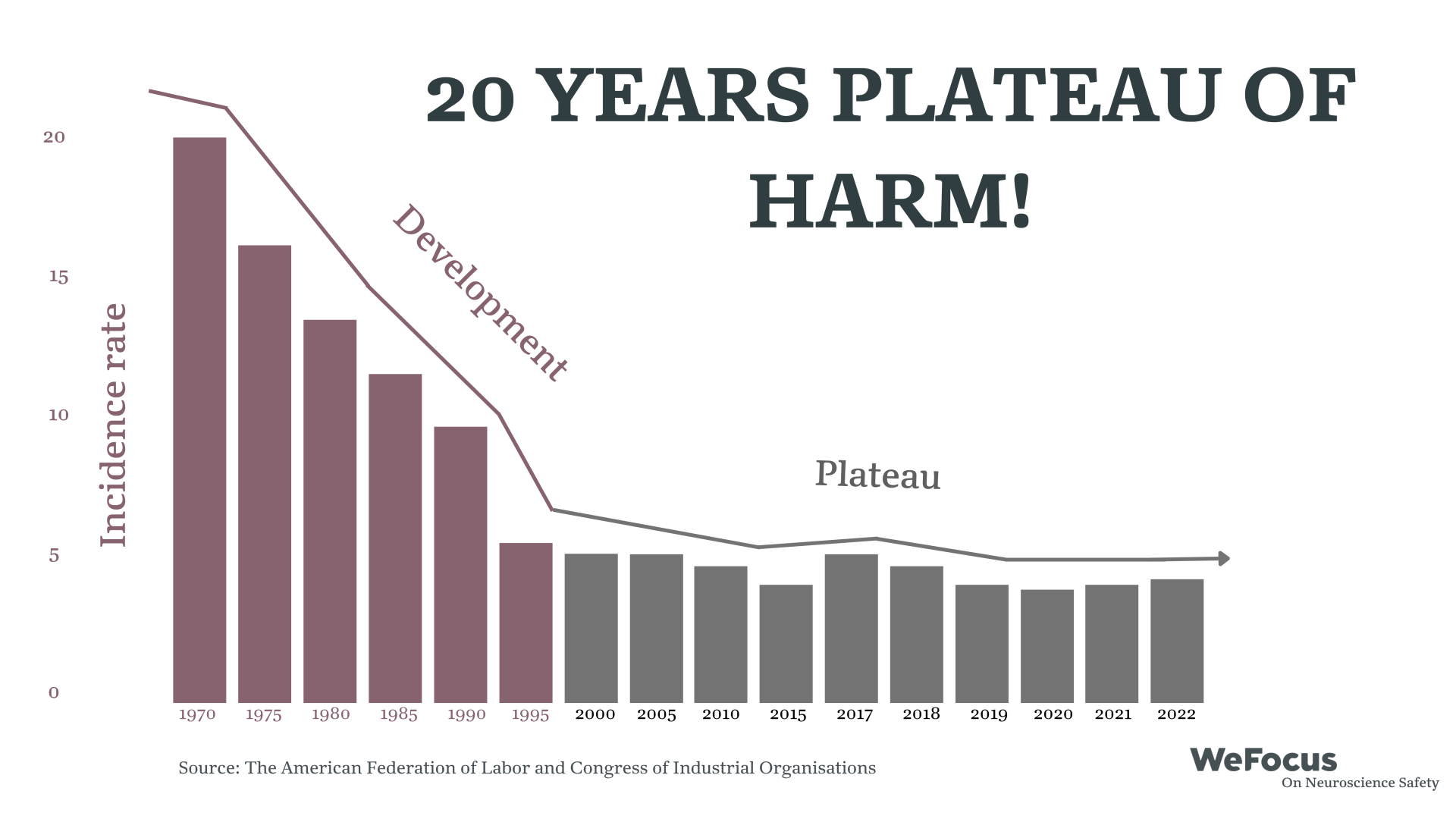Not many HSE professionals are aware of this plateau as the workload of every day often is heavy and they spend all their time securing the current improvements. Unfortunately, the data is brutally honest and there is no doubt about the existence of the plateau!

From the 70s until the 00s the incident rate decreased significantly, but for more than 20 years it has been at a steady rate. While the improvement from the 70s till today is impressive, there is still a lot of room for improvement, as the steady rate means that too many workers still are being injured or killed due to workplace accidents. The improvement we experienced from the 70s to the 00s has mostly been due to the incredible improvement in work equipment, gear, kit, and machinery and the impressive and consistent work done with root cause analyses and design. But if the current approach and design were to solve the problem and break the plateau it would already have done so. Instead, the fact is that our current excellent equipment and outstanding policies and procedures - due to great root cause analyses and design - should be kept the way they are to keep the incident rate from spiking.

But they simply won’t take us further. To solve the problem we must look towards the big and yet relatively unhandled Human Factor. In order to break the plateau and reduce the number of incidents, we need to dig deeper into the root causes and realise that the Human Factor is one of the crucial ones! Many of the current incidents and accidents occurring can be attributed to a lack of focus and a lack of situational attention. This is why it is essential for organisations to prioritise mental focus performance training by incorporating Neuroscience Safety in the workplace.
There is a unique opportunity to dovetail Neuroscience Safety into your already great HSE work to break the plateau of harm. Subsequently, this approach will create never before seen engagement in the Safety Culture and the executive team.
Training employees to plan their tasks at hand, to be more independent, and provide them with the tools they need to stay focused can help to prevent accidents and improve service quality tremendously. Breaking the plateau of harm in HSE is not an easy task, but it is possible and the solution lies in Neuroscience Safety. Even though the task may not be easy, new scientific discoveries, behavioural psychology, and neuroscience has shown the potential of Neuroscience Safety and how much improvement is easily accessible if just we work with the findings instead of against them.



